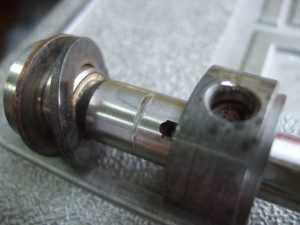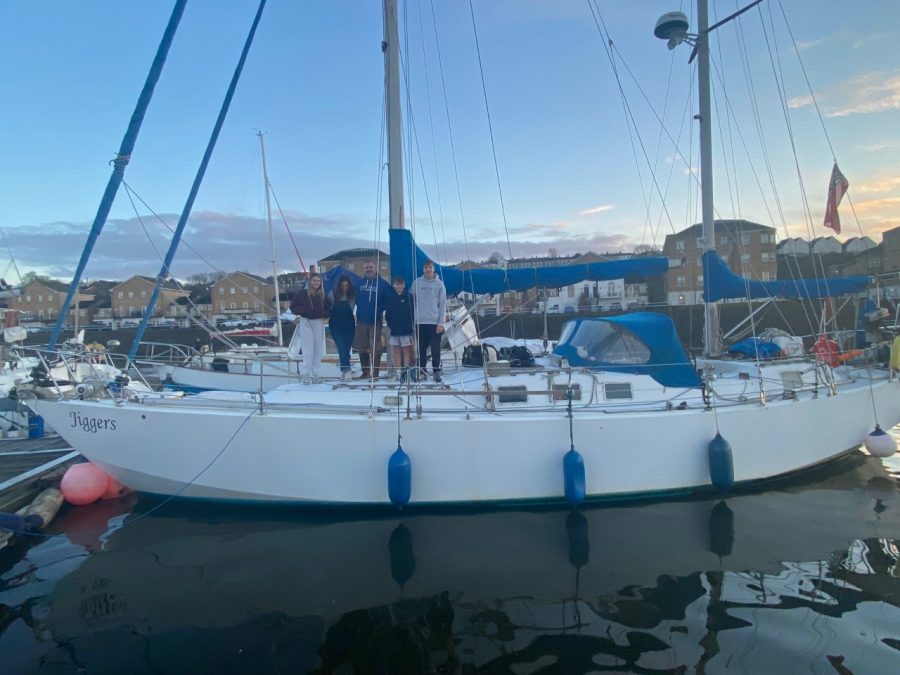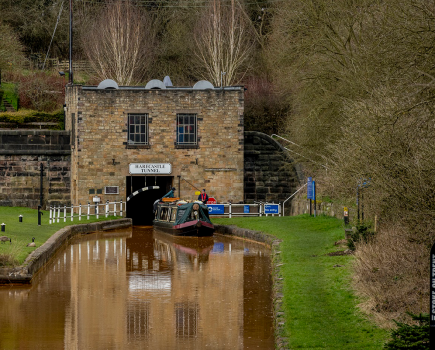Over the past year, emergency assistance and breakdown firm, River Canal Rescue, says it’s witnessed an uncharacteristic peak in fuel-related component breakdowns not linked to diesel bug.
RCR describes the problem as sticky fuel and with its marine engineers now responding to two-three cases per week on the inland waterways, managing director, Stephanie Horton, is keen to alert the wider sailing community to the issue.
Stephanie explains: “We first became aware of sticky fuel when we had two identical jobs where fuel injectors were diagnosed as needing an overhaul, yet their replacements stopped working within a week, and the injection pumps were found to have failed even though the diesel was clear and bright.
“Our engineers found in both cases, the injector pump racks had seized solid and the nozzles were blocked, and when replacing the plunger filter head, they found the fuel had a sticky, syrup-like substance. Alongside stuck injection pump racks, injectors and filter head plunger failures, we also had cases of fuel filters blocking with wax inside them.

Injection pump
“Initially we suspected sugar in the fuel, but sugar stays crystalline instead of dissolving. We’re now considering it may be related to a change in fuel and fuel treatment additives. This is not contamination in the traditional sense (all the samples sent away for analysis are clear); it’s only the smell of turps that alerts us to a problem.”
Following discussions with several leading fuel analysis companies, RCR is now working with a university lab to use IR spectrum analysers and a range of samples/treatments to see if the cause of sticky fuel can be identified.
Stephanie concludes: “Although there are some trends and patterns developing in the cases we see, it’s important to have scientific evidence to back-up our theories. As an industry we must work together to find a solution.”
Upon hearing the problems sticky fuel was causing inland waterway boaters, RCR has been approached by owners of sea-going vessels, reporting similar issues. Here, ketch and yacht owners, Andy Reeves and Tim Barker, share their experiences:
We need to find the cause

Andy Reeves and family onboard Jiggers
Andy and Lindsay Reeves, and their three children, have enjoyed their boat Jiggers, a Bruce Roberts Mauritius 43ft steel ketch, for 13 years. Moored in Cardiff Bay, she has a Volvo Penta MD22 60hp diesel engine and carries 1000L of diesel in 2 x 500L tanks, built into the hull.
“We’ve never had an issue with our engine; it’s always regularly serviced and starts first time every time. Whenever we fill our tanks, we add half a small bottle of diesel treatment to each one.
“Prior to taking up our Cardiff berth (which has its own fuel pump), we’d purchase 500L of diesel, delivered to our home in Gloucestershire, and once pumped from a tanker into drums, I’d transfer it into cans for the boat.
“Jiggers’ fuel has always been clean and clear and I’ve never noticed any sludge. I add a diesel treatment as having a breakdown at sea, especially on the Bristol Channel, with its strong tides, navigational hazards and shipping movements, would be extremely scary.
“We have a small Kubota diesel generator in the engine room; this starts every time, shares the fuel from the same tanks and the filters are always clean. There’s also a Webasto Thermtop C 5kw diesel water boiler which heats the cabin radiators.
“Last winter we went through two 12v fuel dosing pumps which I thought odd as they both failed so soon after each other. They also use diesel from the same tanks.
“We cover around 500 nautical miles per year, sailing from Cardiff to bays in the Bristol Channel and south Cornwall/south east Devon, stopping at the Scilly Isles and Lundy Island when coming home.
“In the summer, when the problem occurred, we sailed 841 nautical miles – from Cardiff to Guernsey, Jersey, St Malo along the French coast bays, up the River Rance and Ile de Brehat, before clearing customs at Roscoff. We headed back to the UK, stopping at the Scilly Isles.
“Whilst away, we noticed the engine needed some throttle to start. I didn’t worry too much and checked the fuel filter, which was clear.
“We dropped anchor at Porthcressa, Cornwall, and after checking weather reports, noticed the wind was increasing which would expose the anchorage two days later. We decided to find another safe anchorage and upon starting the engine, it stalled and wouldn’t run.
“I checked the battery voltage, and removed the fuel pipe from the injection pump. I noticed fuel poured out of the pump when the engine was cranking, which is what I expected. I thought perhaps compression issues, but being in a remote area and with a favourable down-wind sail back to Cardiff, opted to sail off the anchor.
“We sailed 166 miles back to Cardiff, lowered our RIB from the davit and towed ourselves through the Cardiff barrage in the dark, reaching our berth with the help of our 18hp outboard.
“Having initially identified an engine compression issue, I removed the head, had the valves checked, fitted a new gasket and timing belt, and tried starting it again. It was then we realised it wasn’t compression. I removed an injector, reconnected the fuel line out of the block and found no fuel was coming out of the injector. I removed the pump and injectors and took them to a local injection specialist. I was told the pump had seized solid, the governor fulcrum was bent, there were a couple of cracks in the shaft and although the pump pumped fuel, it wasn’t under pressure.
“The pump had a yellow sticky substance throughout internally which is very difficult to remove, yet when heated, it apparently wipes away (with the help of solvent and ultrasonic cleaning). The engineer described it as ‘sticky diesel’ and said he came across the same issue in the summer with a canal boater who used a diesel treatment. So far the estimated bill for the pump and injectors is £1,250 plus vat, and there’ll be further costs for fitting and checking the timing.
“My fuel has a very odd smell which smells very similar to turps or paint brush cleaner.
“Fortunately this didn’t happen at an entrance into a rocky channel and we didn’t require assistance from others. Whatever this problem is, it needs urgent action to find the cause. An engine failure is not only extremely costly, it could potentially impact safety.
A matter of urgency

Tim Barker
Tim Barker is a cruising sailor with a 50 ft sailing yacht, Mina2, which he sails all over the world.
“ I had a mechanical Perkins M90 diesel engine for about 18 years which was mainly completely reliable and it crunched its way through most things – dirty fuel, mild cases of bug etc. In Brazil in 2013, I got a bad case of diesel bug and used a diesel bug treatment. This was effective and I’ve used a preventative additive ever since.
“In 2017 my Perkins seized badly and the worst decision I ever made was to replace it with a modern electronic common rail Yanmar 4JH80 engine which operates at greater pressures. Almost from the day it was installed in the Caribbean, I’ve suffered multiple engine failures with the injectors gumming up.
“During the first 250 hours running time (when I returned the yacht to Italy in the Mediterranean), the engine failed four times, requiring the injectors to be cleaned by Bosch on three occasions, at around €800 a time!
“Twice, I’ve had the engine drained of all fuel, which was thrown away, not polished and returned. Having had the fuel tank thoroughly cleaned and all the fuel pipes( from tank to engine and back) replaced before fresh new fuel was put in, 100 or so hours later, the engine would fail again.
“Each time Yanmar claimed it was contaminated fuel, could not find any evidence of contamination – no bug, no water, nothing. The last time it failed was September 2019. I had the engine fixed again, re-cleaned the gummed injectors and left the boat in Naples for the winter.
“The pandemic prevented me from returning to the boat until September 2021 – an unused period of two years. Before returning to recommission the boat, all the diesel (500 litres) was drained from the tank and thrown away, and the fuel tank was thoroughly cleaned again before refilling, with what I believe was fresh new diesel (via the fuel pontoon of a marina with the biggest yacht charter fleet in the region so fuel turnover is high).

Mina2
“As usual, I added a fuel treatment as a precautionary additive, plus a solution that does a slightly different job (turns any water into an emulsion and deprives the bug of the interface it needs to reproduce, rather than simply killing the bug and dispersing it).
“I also put a particularly fine two-micron filter into the primary Racor fuel filter (a 10 or 30-micron filter is typically used) and motored to Sicily because of a lack of wind. After 65 hours of motoring, using 400 litres of fuel, I checked the Racor filter and found it jet black and close to blocking.
“Looking into the fuel tank, which was completely clean three weeks earlier, I discovered a layer of black-coloured contaminant at the bottom. It was not viscous or sticky, but similar to black oil (although not oil as this would have dispersed in the diesel). I doubt very much if this is bug – it’s nothing like any bug I’ve come across before.
“I cannot understand why this is happening, particularly as the big charter fleet in Naples where I refill confirm they’ve had no fuel-related problems. This whole depressing cycle makes it dangerous for me to use my beloved boat; I need to find the cause and solution as a matter of great urgency!”
Tim reports he hopes to have now resolved the problem: “I’ve installed a Diesel Dipper which, whenever the engine is running and once a week when the engine is not being used (like in the winter months), extracts fuel from the lowest point of the diesel tank (where any water or contaminants would settle) and filters it before returning it to the tank.
“I also use Marine 16 Diesel Fuel Complete as my only additive and changing the habit of a lifetime of always leaving the fuel tank completely full at the end of the season, I now run the tank down to as close to empty as I can before decommissioning. When recommissioning in the spring, I recharge the tank with fresh fuel.
Time will tell, but at the end of the last season (October), after 160 engine hours, my pre-filters were clear rather than being black and sticky, so I am keeping my fingers well crossed.”
Let us know if you’ve come across anything similar and we’ll pass your comments on to River Canal Rescue.
River Canal Rescue and its team of experts is standing by, ready to answer whatever issue is causing you angst. Whether it’s an engine bay squeal, starter motor problem, fuel filter contamination or under- performing batteries – or anything in between – RCR can help solve the problem. Email specific or general maintenance questions to canalboat@rivercanalrescue.co.uk.








